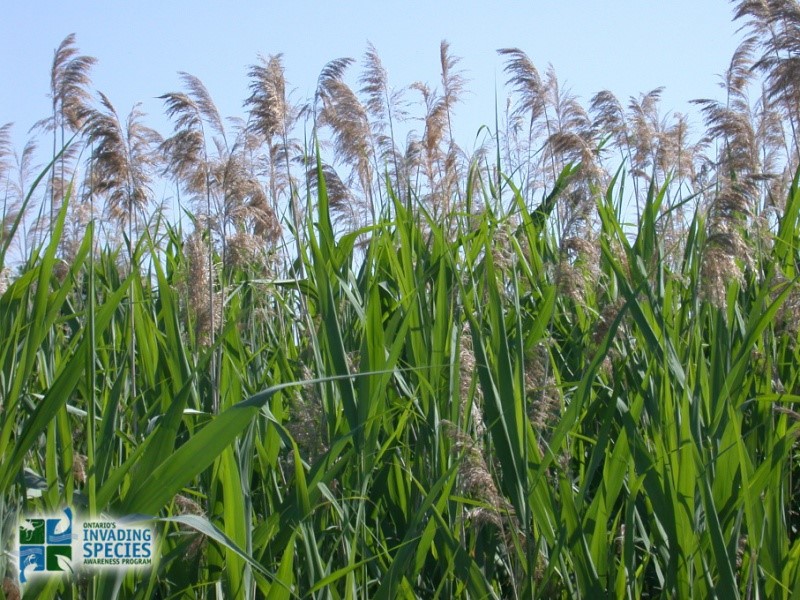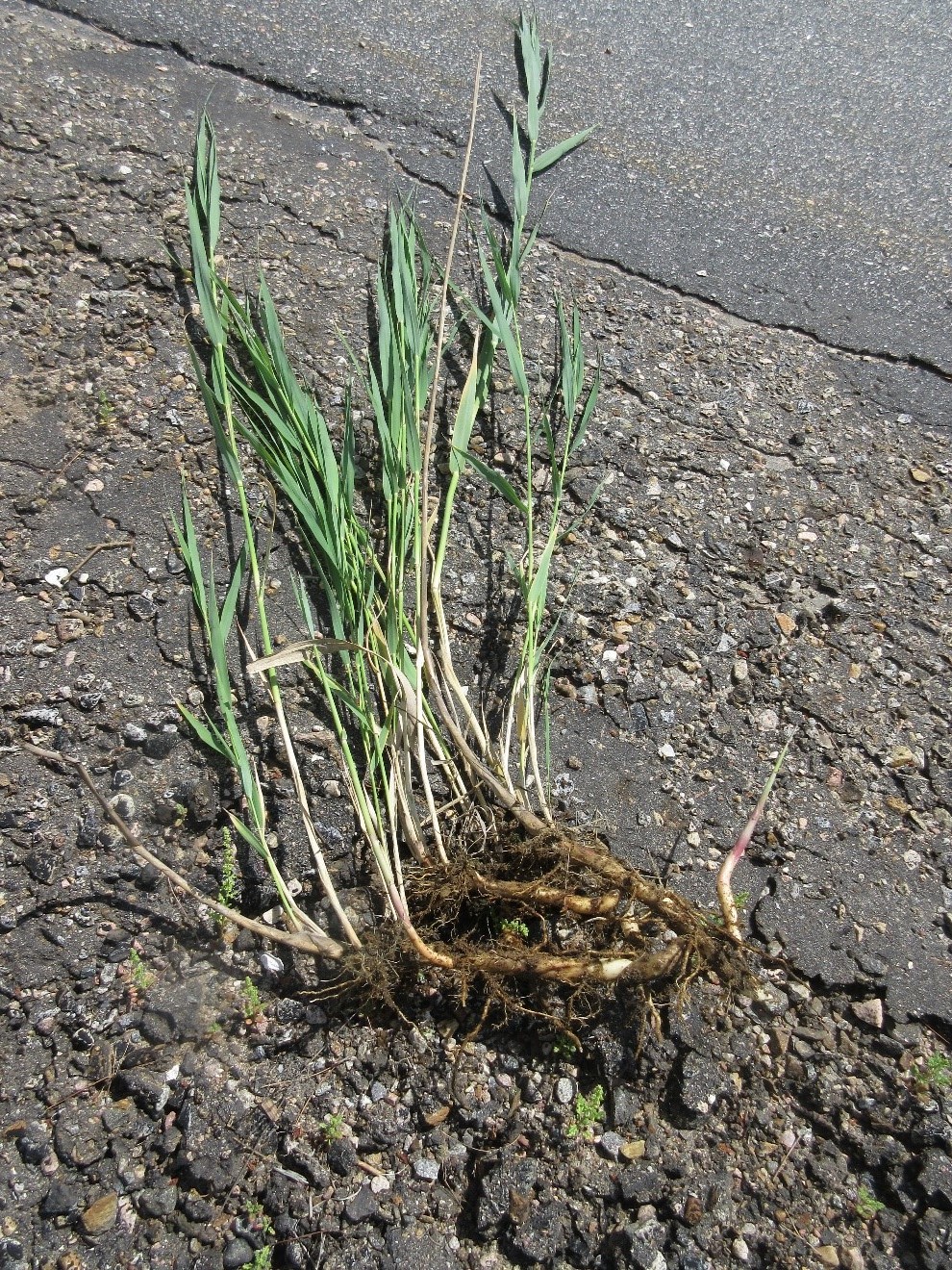Table of Contents
Invasive Species

The Common Reed, Phragmites australis, showing typical growth pattern and large, dense seedheads. Source: Ontario’s Invading Species Awareness Program. Photo: Wasyl Bakowsky
2.2 Phragmites
Name: Common Reed (Phragmites australis subsp. australis)
General Information: The Common Reed, also known by its Latin name Phragmites, is a very common and highly invasive perennial grass. It grows in disturbed areas, along roadsides, in ditches, as well as along stream banks and on beaches. Phragmites grows aggressively, out-competing native vegetation for nutrients and water, often leading to a decline in biodiversity.
Phragmites can grow quickly into dense stands choking out native plant species. Because it consumes more water than most native species, it can cause localized drying of the substrate, which further impacts native vegetation communities. Although it prefers wet areas, the root network can be extensive, allowing it to survive in fairly dry areas as well. Much of the biomass of a Phragmites plant is underground in the root system. This plant is capable of spreading through seed dispersal and vegetatively by way of the root system which extends out with horizontal runners called rhizomes. Rhizomes can grow several meters per year, allowing patches of Phragmites to spread and increase in size rapidly. Most isolated patches of Phragmites are a result of human actions, usually the use of contaminated equipment. Seeds, or fragments of rhizomes from invaded areas get stuck to vehicles, ATVs, or construction equipment and are then introduced to disturbed other areas, causing new invasions.
Identification: The one challenge to identifying invasive Phragmites is that there is a very similar native subspecies, Phragmites a. subsp. americanus. Compared with the invasive variety, naitve Phragmites a. americanus is relatively uncommon. Nearly all occurrences of Phragmites associated with disturbed areas in the park are the invasive subspecies. The invasive Phragmites has stems that are tan or light brown in colour, leaves that are a green to blue-green in colour, and dense feathery seed heads. In the right conditions Phragmites can grow to 5 meters in height.
Control: Eradicating patches of Phragmites may take several years to complete, as the plant will regrow from a single rhizome fragment. Digging up the rhizome network and removing all aboveground biomass can be labour intensive, but an effective first step in controlling this species. If regrowth occurs, then these remnant patches also need to be eradicated quickly or the plant will recolonize the original area. Some plants may require herbicide treatment for successful eradication. Contact Ontario Parks for further information.
Phragmites is regulated as a restricted species under the Ontario Invasive Species Act, 2015 (https://www.ontario.ca/laws/statute/s15022). Under the act, a restricted species is prohibited from being brought into a provincial park, and prohibited from being deposited or released in Ontario.
Information sources:
Ontario’s Invading Species Awareness Program: Invasive Phragmites
http://www.invadingspecies.com/invaders/plants-terrestrial/invasive-phragmites/
Best Management Practices in Ontario: Invasive Phragmites
http://www.ontarioinvasiveplants.ca.php56-30.ord1-1.websitetestlink.com/wp-content/uploads/2016/07/Phragmites_BMP_FINAL.pdf

Phragmites removed from Hwy 60 in Algonquin Provincial Park showing extensive root growth connecting above ground vegetation. Photo: Alison Lake